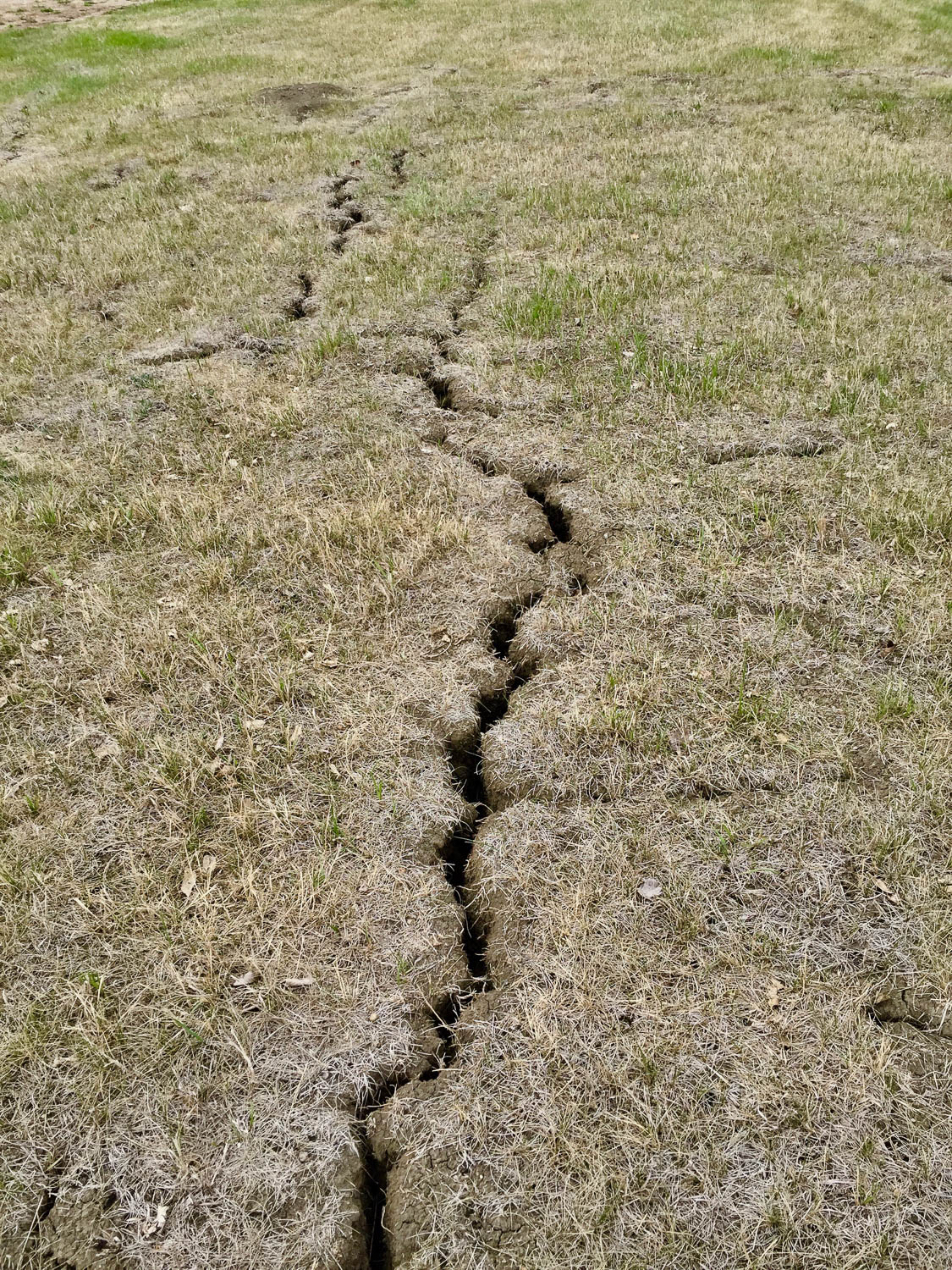
Drought cracks in lawn
unsightly to damaging
Prevention is key to managing your soil during dry periods:
- Apply 2.3 cm (1") of compost in early spring. This is a good time to seed your lawn with drought tolerant grass seed.
- Do not cut your lawn too short. Set your blade at the highest setting. Mow often enough so that you are removing no more than 1/3 of the blade at one time.
- Signs that your lawn is drought stressed:
- Leaf blades that are grey or olive-colored or wilted.
- Lawn is laying flat, especially if you can see footprints after walking on it.
- Delay mowing until after you have watered so that the grass recovers first.
- Leave your lawn clippings on the lawn. They will break down to act as a mulch and will feed your soil.
- Water deeply to encourage deep root penetration: 2.5 cm (1") of water every week or so. Set an empty tuna can under your sprinkler – when it is full, you know that you have applied the right amount of water.
- The best time to water is early morning. Second best time is just before dusk. Never water in the middle of the day as much of the water will be lost to evaporation.
- Try not to walk on your lawn when it is wet – this causes the soil to compact.
- Use the right lawn seed for your conditions. For example, if your site is sunny, select a drought tolerant seed mix. The addition of 5% clover will help to fix nitrogen in the soil.
- Go easy on the fertilizer. Apply in spring after the lawn is actively growing. Don’t apply fertilizer after August 15 on the Prairies. It will cause tender growth which may not harden off properly in time for winter.

